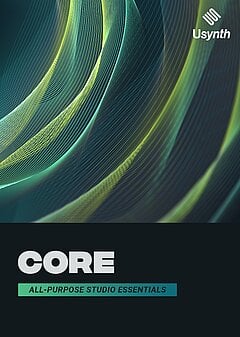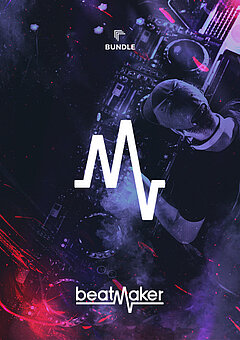How to Learn Music Production Starting from Square One
The software and resources to take you from a new producer to master status, without blowing your budget.
APRIL 14TH, 2022
Stick with us until the end of this beginner tutorial to find out how to learn music production using platforms like Groove3:
In this article, our aim is to show you the most important software tools and resources you need to get started with music production as a beginner. One of the most valuable companions you can bring with you on your journey is a set of quality tutorials that don’t waste your time (or worse, lead you completely in the wrong direction!), and we all know that YouTube isn’t a shining example of this.
Instead, we recommend checking out Groove 3, a site dedicated to creating high-quality music production tutorials across a broad range of topics, both from the tech and creative sides. Whenever you feel like your knowledge is lacking or you know you need more information, this is a great source of quality information whenever you need it!
Stock tools
For simplicity’s sake, this article assumes you’re primarily interested in producing EDM or electronic music of some sort. If you’re more interested in more acoustic-focused genres like orchestral music or even metal, you’ll want to look into sound libraries containing samples from the instruments you need. EDM is a more straightforward because rather than acoustic libraries, you can simply focus on software synthesizers or softsynths.
Most DAWs come with a good starter set of stock effects and other tools, and you can get by with them for the standard audio effects you need on a regular basis. For a list of audio effects you should always have at your disposal and what they sound like, check out our companion article, The Ultimate Guide to Audio Effects. Without further ado, let’s jump into the first tool you’ll need on your journey.
You’re also likely to find a drum machine of sorts, allowing you to load in samples of kicks, snares, hi hats, etc. This takes care of most of the drum and percussion needs you have in EDM, as you can load in samples to your heart’s content — however, there’s also the question of what rhythms and patterns to actually create once you pick your samples. This takes some time to acquire a feel for, but you can completely skip this learning curve by using a Beatmaker: a flexible virtual drum machine with loops built in that you can edit to fit your exact needs in moments!
Synthesizers
First things first, you’ll need a powerhouse synth that can handle leads, chords, basses and more, one you can turn to every time you need to add a melodic or harmonic element to your arrangement. There’s an important caveat to this: as your production skills grow, your musical taste will develop further, you’ll likely grow pickier about how individual elements sound, and you’ll begin to seek out specific synths for specific purposes. Your collection of plugins will grow, and you’ll no longer use one synth for everything.
Early on, however, it’s important to practice your skills on one synth to limit variables in your work environment, which will help you master the essentials of digital synthesis much faster than if you were to jump around extensively. Otherwise, you’ll spend as much time learning synthesizers as you do improving your synthesis skills! For this reason, the choice of your first synthesizer is critical, and you need one that covers all the bases.
In our totally unbiased opinion, the best option for this is Usynth — specifically, Usynth Core. We built it to be the one synth you would take with you to a desert island, providing all the essentials you need to fulfill any common purpose when making music (plus, it’s less expensive than many other heavy hitters). If you need to create a lead that cuts through the mix, Core can do it no problem. Pads or other textures to round out an arrangement and make a song sound more full? No issues there. Hard-hitting basses ready to hit the club floor or even turn into heavy basses ideal for dubstep? Core can handle it all!
You’re welcome to choose another synth, of course — the important thing is that you pick an option you’ll enjoy sticking with for a long time to come and that fills every major function you need it to.
Effects
We mentioned above that stock effects in your DAW are sufficient for most common mixing and production purposes, but there are many times when you’ll want to add more creative flair, inject movement into your chords, or create avant garde effects like liquefying and crunching. This often requires more complicated effect chains that are tough to create from scratch — the solution is to have a reliable multi-effect in your toolbox for exactly those moments.
A multi-effect is a chain of many effects in one, designed to lead you toward a particular sound quality by heavily processing any audio you run through it. This might mean a collection of phasers, delays, distortion, reverb, spectral processing and more, though it depends on the specific plugin being used. UJAM has a free multi-effect called MICRO, which is part of our line of Finishers. Anytime you need to spice things up, you can pull up MICRO and call upon one of the many presets for transforming your sound into something entirely new. The ability to go from one timbre to something entirely new is invaluable, and not just because it expands your range of sound design possibilities — it also gives you the opportunity to reset yourself and jumpstart your inspiration when you feel your creative process stagnating.
Wrapping up
It’s easy to become overwhelmed when you jump head first into the world of music production — one of the most effective ways to reduce stress is to limit your arsenal to the essentials. This isn’t just about saving money, either; being cost-effective is important, especially in the beginning, but it’s equally important to limit the number of resources you use to develop your skills so that you have consistency. Master a few great tools before you branch out and you’ll have the foundation you need to develop your sound.
With only the stock tools in your DAW of choice, a heavy hitting synthesizer capable of handling all your general needs, and a powerful multi-effect, you have everything you need to create almost anything you could imagine. Patience and practice are the biggest factors ... not the tools. If you can create great music with simple tools, you’ll be able to get infinitely more out of the complex ones!
About the Author
Harry Lodes is a copywriter, marketing consultant and content writer for audio and ecommerce brands. He lives in the Philadelphia area, releasing Eastern/Western hybrid EDM under the artist name KAIRI hearkening back to his roots in Berklee College of Music.
Stay up to date
Sign up and we’ll send you an e-mail with product news and helpful stuff every now and then. You may unsubscribe at any time.
Defy Limits
We develop software solutions that enable people to create, consume and interact with music.




